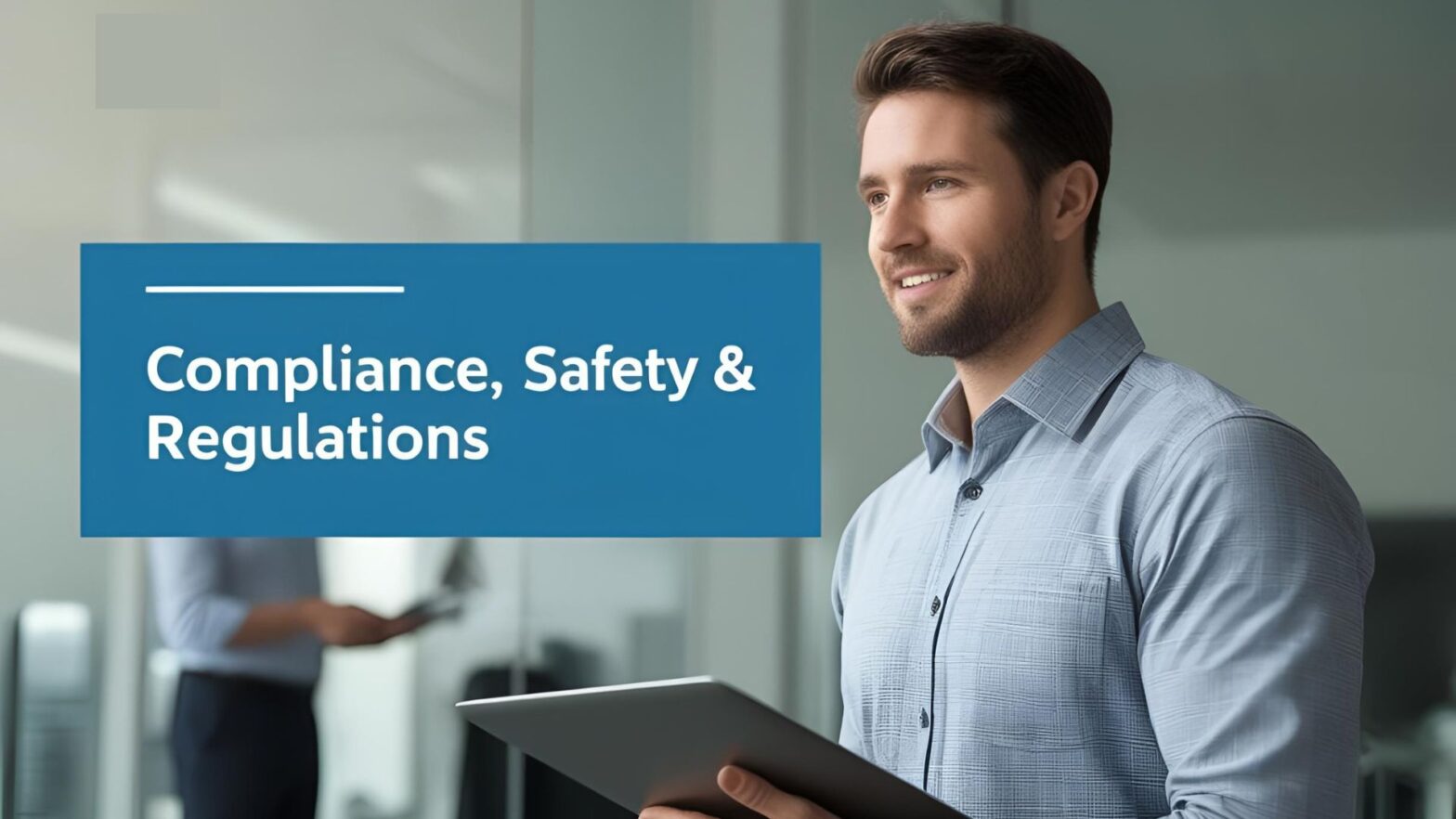To stay covered, avoid premium hikes, and protect your business, most insurers require active safety protocols. Here’s what you should have in place:
Facility & Warehouse Safety
Fire extinguishers, alarms, and sprinklers are inspected and up to code
Aisles and exits are clear and properly marked
Material storage (especially flammables) complies with local fire and OSHA codes
Proper signage is posted for PPE, hazards, and restricted areas
Spill containment kits are available and staff are trained to use them
Regular safety audits are performed and documented
Employee Safety Programs
Workers have received documented safety training (forklifts, lifting, PPE, etc.)
An Injury & Illness Prevention Program (IIPP) is in place
Safety Data Sheets (SDS) are maintained and accessible
Safety meetings are held regularly and logged
A return-to-work or light-duty policy is in place for injured employees
Fleet & Driver Compliance
Commercial drivers have up-to-date medical cards and licenses
Pre-trip/post-trip inspections are documented
GPS or telematics systems are in use to monitor driving behavior
Preventive maintenance schedules are followed for all vehicles
Accident response procedures are written, trained, and rehearsed
Insurance & Documentation
Certificates of insurance are current and accessible
Workers’ comp, auto, and liability policies are reviewed annually
Safety inspection logs are available in case of claims
Incident reports are completed and stored for all injuries or property damage
🚛 Your Safety Checklist for How to Avoid Violations During DOT Inspections
DOT inspections can happen anytime—on the road or at your facility. Here’s how to stay ready and avoid costly violations:
Driver Compliance
Valid CDL and up-to-date medical certificate (MVR clean and filed)
Hours of Service (HOS) logs accurate and compliant (ELD if required)
No alcohol, drugs, or prohibited items in the vehicle
Emergency contact and license documentation readily available
Vehicle Condition
Pre-trip and post-trip inspections completed and documented
Brakes, tires, and lights fully functional and within legal limits
Mirrors, windshield wipers, and horns in working order
Load properly secured and within legal weight limits
Reflective triangles, fire extinguisher, and spare fuses onboard
No oil, fuel, or coolant leaks visible during inspection
Logistics and Load Safety
Proper tie-downs for lumber, pipe, pallets, etc.
Hazardous materials (if applicable) properly labeled and documented
Weight distribution complies with DOT standards
Load doesn’t obstruct visibility or exceed height/width limits
Paperwork
Bill of Lading or manifest for all loads
Proof of insurance and vehicle registration
Maintenance and inspection logs up to date
IFTA (International Fuel Tax Agreement) compliance if operating across states
Final Tip
DOT and insurance inspections aren’t just about passing—they’re about protecting your team, your customers, and your bottom line. Use these checklists regularly to avoid fines, delays, and denied claims.


